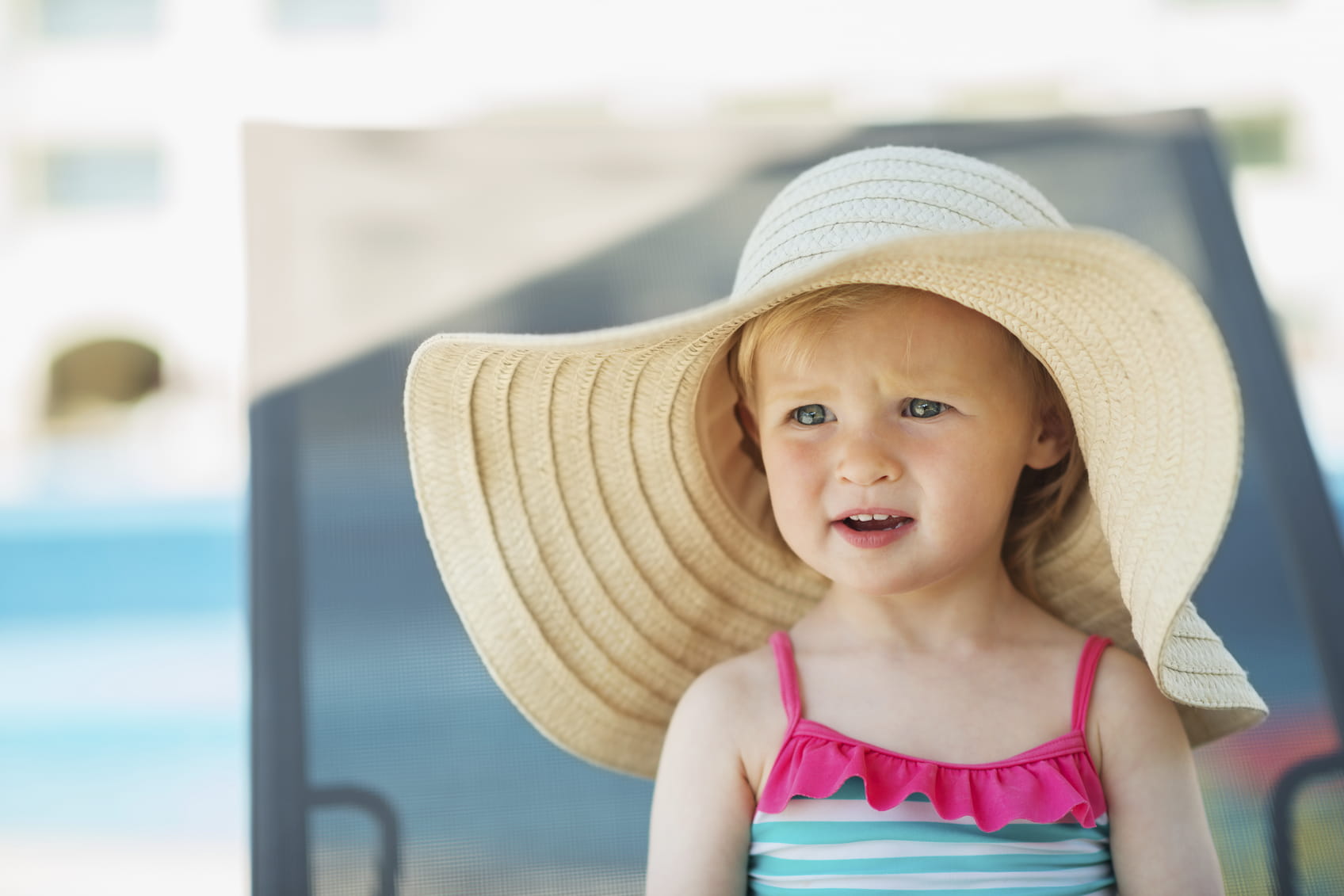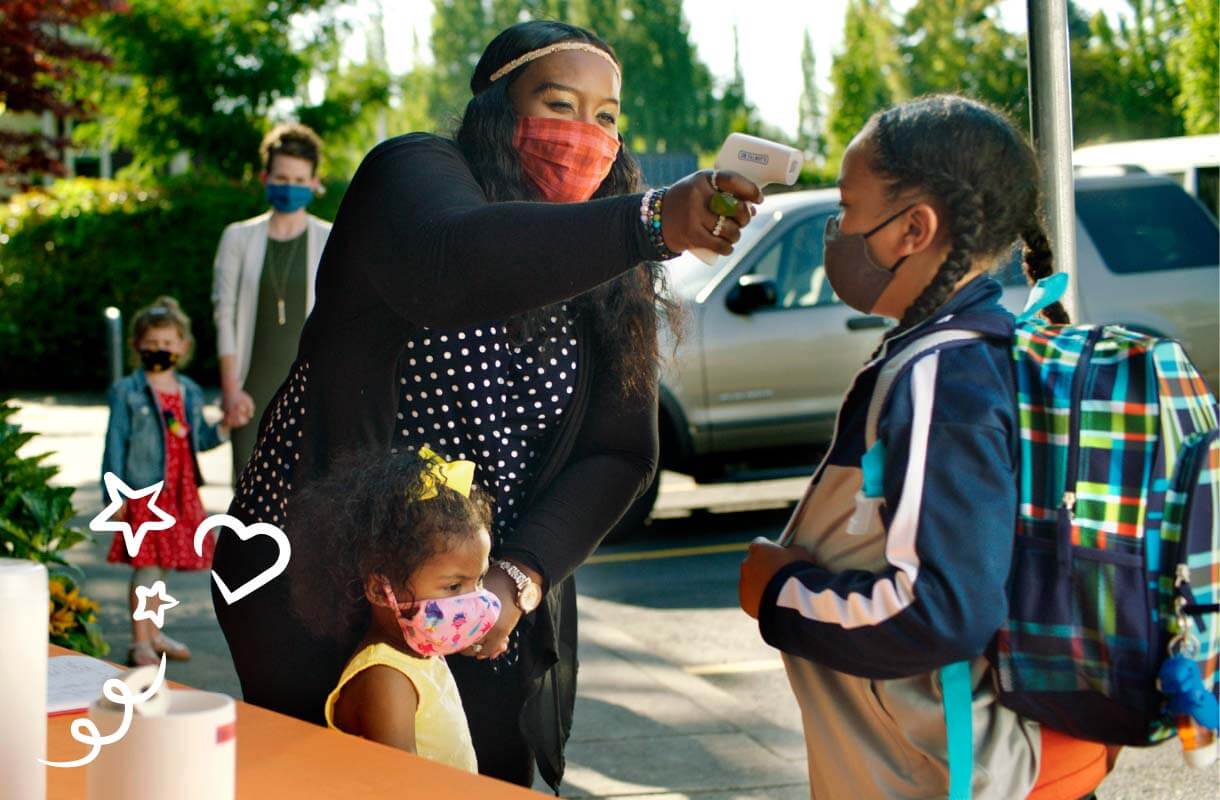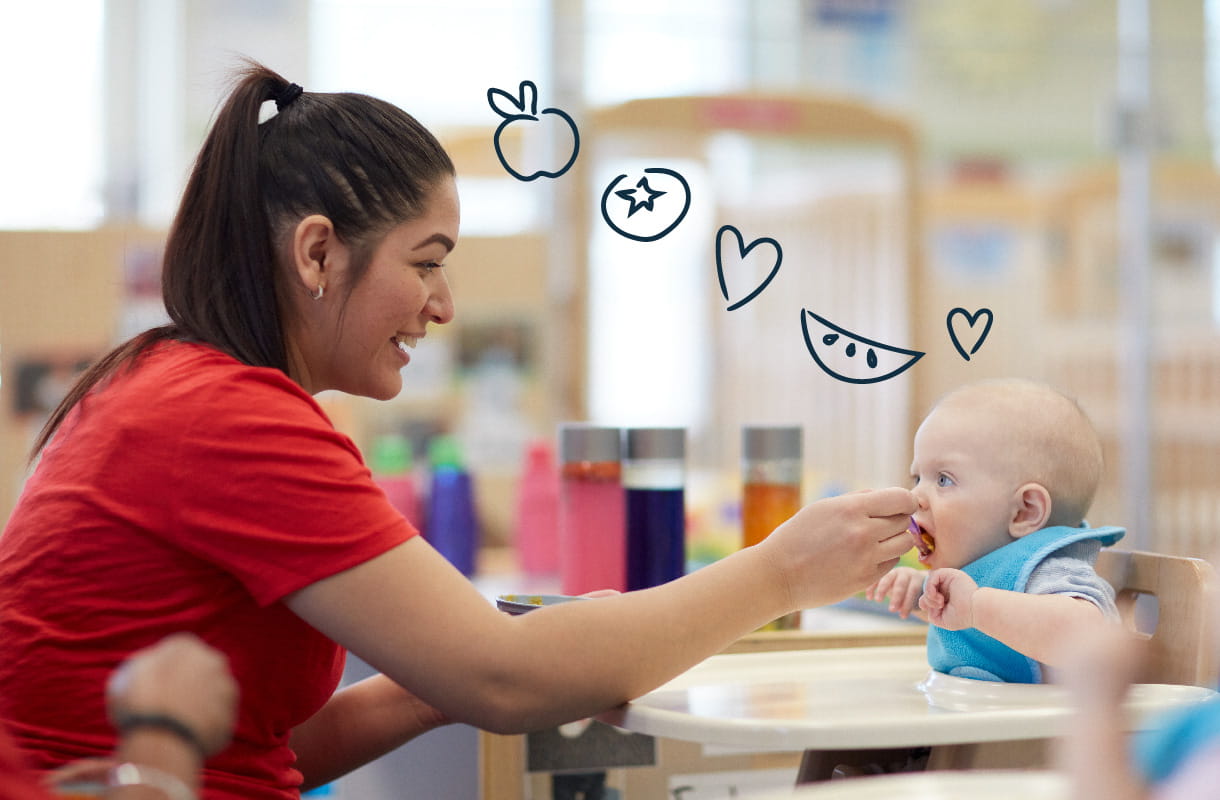Summer's Here! The Guide to Protecting Children's Sensitive Skin

Hot times ahead! From melting popsicles to lazy days by the pool to dinner al fresco, summer days are what childhood memories are made of—but you don’t want to spoil the fun with a sunburn or even too much sun exposure.
These sun-safety strategies will help you protect babies’ and children’s oh-so-soft-and-sensitive skin. And if you should get a sunburn, we have a few ways to soothe parched skin.
Sun Safety Rules: The Basics
- Keep infants younger than 6 months out of direct sunlight. You also want to dress them in lightweight pants, long-sleeve shirts, and wide-brimmed hats.
- If sun exposure is unavoidable with an infant, use a very small amount of sunscreen on exposed areas (like the nose or the neck). Just make sure to use a sunscreen with at least SPF 15—and read the sunscreen safety information below before deciding on a brand that’s good for baby.
- You often see parents applying sunscreen at the pool. But sunscreen actually takes about 30 minutes to be effective. That’s why the American Academy of Pediatrics notes you should apply sunscreen before leaving the house!
- Always limit sun exposure when the sun’s rays are most intense, between the midday hours of 10 am and 2 pm.
- The best protection against the sun is clothing, sunglasses, and hats. Choose light-colored clothing with a tight weave, which you can check by holding a piece of clothing up to the light: The less light you can see through it, the better!
- Wide-brimmed hats give the best protection. The American Academy of Pediatrics recommends using a hat with a brim at least 3 inches wide. Many brands of children’s hats give a UPF rating (like the numbers on sunscreen) to ensure a certain level of sun protection, but the most powerful defense won’t help if parts of your child’s face or neck are left unprotected.
- Wear sunscreen with at least SPF 15 (SPF = sun protection factor) on sunny and cloudy days, and reapply every two hours (or after any swimming or sweating).
Sunscreen: The Real Deal
SPF, UVA, UVB, UPF, oh my! With so many acronyms and numbers and marketing promises in the sunscreen aisle, it can be a chore to pick the right sunscreen for your child.
It’s important to read your labels. Thanks to new regulations from the FDA, the labels on sunscreens placed on store shelves after 2012 must provide consistent information. That helps, but it may not be the whole story. Here are some other guidelines to keep in mind:
- Sunscreens labeled “Broad Spectrum” are the only sunscreens that block both ultraviolet B (UVB) and ultraviolet A (UVA) rays. That means they are proven to provide protection against skin cancer and early skin aging.
- You don’t need to buy a “kids’ sunscreen.” The FDA doesn’t make a distinction between kids’ sunscreen and other options, and most brands contain the same ingredients.
- There’s no such thing as a “waterproof” or “sweat-proof” sunscreen. No matter what your activity is, you should reapply it every two hours.
- When you buy a new sunscreen, test a small amount on your child’s back to check for allergic reactions before applying to more sensitive areas.
- Avoid spray sunscreen. In 2011, the safety experts at the FDA issued a warning that parents should avoid using spray sunscreen on kids until the agency could thoroughly investigate the risks of sunscreen. If spray sunscreen is the only kind available, spray it on your hands first before rubbing it on. Sprays can also blow away on windy days, leaving less on the skin for sun protection, so, despite spray sunscreens’ seeming convenience, swap lotions for your spray can.
Too much sun? How to Soothe Sunburn
There’s no quicker way to ruin a fun day in the sun than a painful sunburn. Sunburns increase the risk of skin cancer and wrinkles and—perhaps most importantly for little minds—can keep kids from participating in future summer fun while their skin heals. The American Academy of Dermatology recommends parents:
- Help children use a cold, damp towel for 10 to 15 minutes a few times a day to soothe the heat from sunburn.
- Use a moisturizer that contains aloe vera, but avoid ingredients like petroleum, benzocaine, or lidocaine that can trap heat in or irritate the skin.
- Have children drink extra water because sunburns can cause dehydration.
- If your child’s sunburn turns into blisters, causes a lot of pain, or your child develops a fever, dizziness, or nausea, call your child’s doctor.




